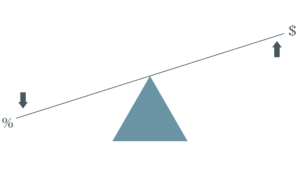By: Hanna Kaufman
2020 was an eventful year, to say the least. This unprecedented year will likely go down as the “worst year” in modern history. Even after facing a global pandemic, a contentious presidential election, and waves of civil unrest, the resiliency of our society, economy, and stock market still shined through. Inevitably, aspects of this tumultuous year will carry into 2021 as we will see the ramifications for years to come. As we enter this new phase, it is important that we learn from 2020 and set the groundwork for what to expect in the coming months.
Stock Market:
March of 2020 marked the end of the longest bull market in history. The 30%+ market declines that were sparked by the pandemic and the subsequent recession quickly rallied, reaching their previous highs by August of the same year. Despite the rocky start and sharp swings, 2020 ended the year with above-average returns across the stock market. In a bizarre twist of events, the stock market may have even performed better with the pandemic than it would have without. We can thank the easy monetary policy of the Federal Reserve.
The events in 2020 left many investors confused by the disconnect between the economy and the stock market. One common question we heard throughout the past year was, “We’re in a recession, why is the stock market continuing to hit all-time highs?”. After all, unemployment continues to increase, and an invisible virus continues to spread, how could the stock market continue to move in an upward direction?
2020 was an important reminder that the economy and stock market do not walk in lockstep. The economy is a snapshot of the current state, while the stock market looks to the future as investors attempt to predict how companies will perform in the future compared to today. We shouldn’t be surprised that in the past year, the stock market looked past the current impact of the novel coronavirus and looked forward to the return of normal conditions. The stock market looks forward 6 to 12 months, which takes us to the second half of 2021, to a time which (hopefully) sees a new normal with the pandemic largely under control.
Economic Stimulus:
Monetary and fiscal relief lifted the economy through 2020 and into early 2021. The stimulus package that targeted small businesses and individuals provided much-needed financial relief at a time it was desperately needed. The Federal Reserve and U.S. lawmakers left little doubt that they would take immediate action to stimulate the economy and avoid a further weakening of the financial markets.
Looking to 2021, with a new proposed stimulus package of $1.9 trillion, investor confidence continues to rise and provides a needed lifeline to households and businesses still on the brink.
Congress and the President will face complex challenges ahead as they try to get stimulus money quickly in the hands of those needing it most. The conversation will then swiftly shift to how the U.S. will pay for all of the stimulus, which was funded through enormous amounts of debt. There will certainly be long term effects, but what will they be? It is unknown how severe the drag on economic growth might be in the future.
Bonds:
Although stock prices are at record highs, interest rates are at historic lows. As one of the most misunderstood investment vehicles, a fundamental principle of fixed income is the inverse relationship with interest rates. Meaning, as market interest rates fall, the price of fixed-rate bonds increases. The image below can help visualize this principle:
This impacts the overall economy and stock market in many ways, but one impact we have seen is the decline in bond yield. As interest rates decrease, bonds become less and less favorable. As we move into 2021, the federal reserve has pledged to keep interest rates steady, meaning the lack of yield associated with bonds will be true for the near future.
At mid-year 2020, 10-year U.S. Treasuries were paying a little over 0.5%. Investors, looking for the highest returns with the least risk, felt locking their money up for 10 years for a paltry half a percent was not worth the risk. As investors continue to seek higher returns, many may be pushed to take on more risk than is tolerable. Looking to offset the low return from bonds, investors are put in a position to take their chances with stocks in the hope the pandemic would soon end, and earnings would recover in the future.
Relying on bonds for income and appreciation in 2021 is an unlikely expectation, however, bonds still hold a critical place in our portfolios. Fixed income offers capital preservation, diversification, and ballast against stock market risk.
Looking Ahead:
Although 2021 brings uncertainty, now is a time to be cautiously optimistic. History shows the economy will rebound and life will normalize once again. With that understanding in mind, now is the time to position yourself for the uncertainty of the coming years. 2020 was a reminder that developing and sticking to a long-term plan is key to successful investing and financial security. Having a financial plan helps manage the strong emotions that come during major market and economic disruption, which may lead many to make bad financial decisions in the moment.

